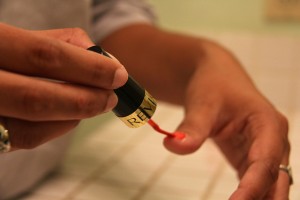
Breathe Easy: Keeping Indoor Air Fresh and Clean
6/1/2015
Originally posted here.
Counterintuitive to most people, indoor air quality is commonly two to five times more contaminated than outdoor air, meanwhile, the average American spends 90% of their time indoors. Although we typically think of cars, factories, and power plants contaminating outdoor air, there are also numerous sources of indoor contaminants that are less obvious. As building envelopes get tighter, less air infiltration increases the concentrations of these pollutants, creating human health concerns. The primary approaches to protecting indoor air quality include diluting toxins through ventilation and reducing or eliminating the sources of indoor pollutants.
“Two factors work together to impact indoor air quality. Ventilation affects how much fresh air you are bringing into the home and source control effects which materials are releasing chemicals into space,” says Scott Steady, Product Manager for Indoor Air Quality at UL Environment. “As we tighten up our homes and have a tighter envelope, that decreases the dilution for the emissions coming from sources inside the home.”
Ventilation to Dilute Toxins
As new homes are remodeled or constructed to have tighter building envelopes, ventilation strategies are increasingly important. In addition to VOCs, indoor air quality can suffer from excessive levels of pollen, dust, and particles from combustion. Exhaust-only ventilation systems can be effective in removing many toxins from the home, but do not recover the heat from exhaust air and exhaust precious cool air out in the summer. Balanced ventilation systems by contrast often supply filtered air, further promoting indoor air quality.
“The rooms with exhaust fans get really good ventilation, but the back bedroom may not feel the effects of that,” explains says Sarah Widder, energy engineer for the Pacific Northwest National Laboratory. “In general, we know that balanced ventilation systems work better in terms of delivering fresh air equally to all rooms of the house.”
Heat recovery ventilation systems are balanced systems that both remove stale air and supply a constant stream of fresh, filtered air into the leaving areas (ex: bedrooms and living room) to ensure optimal air circulation throughout the house. By controlling the location of the fresh air intake, balanced ventilation systems are eliminating the random mark-up air and moisture intake from the walls, windows or crawl space. Pollen, dust, and even particles can be removed, especially when a high-MERV filter is used. In heat recovery ventilation systems, a heat exchanger captures heat from the outgoing air during the heating season. Zehnder heat recovery ventilation systems are up to 95% efficient in transferring this heat to the incoming air, keeping energy bills down. They also boost cooling in the summer months by increasing ventilation rates and transferring coolness to intake air.
Low Emission Materials
Numerous products emit gases at room temperature called volatile organic compounds (VOCs), which are known to cause human health effects. These VOCs are released from a vast array of products, including paints, furniture, cleaning products, air fresheners, personal care items, building finishes, engineered wood products, and adhesives. Indoor levels of VOCs can be ten times higher than outdoor levels, making them a high priority in boosting indoor air quality.
The EPA has not determined threshold limits for indoor VOC emissions, but third-party programs exist that are intended to mitigate exposure to specific VOCs that are believed or known to impact human health. These organizations identify low-emission materials to promote indoor air quality, largely doing the homework for selecting products that enhance indoor air quality.
GREENGUARD certified products satisfy stringent third-party standards for safer indoor environments. This program, administered by UL Environment, screens for more than 10,000 chemicals, including formaldehyde and certain VOC levels. There are currently more than 26,000 certified products available in 28 categories, making safe material selection easier.
